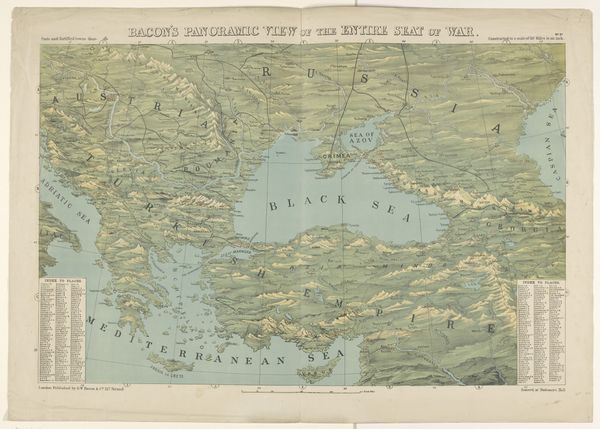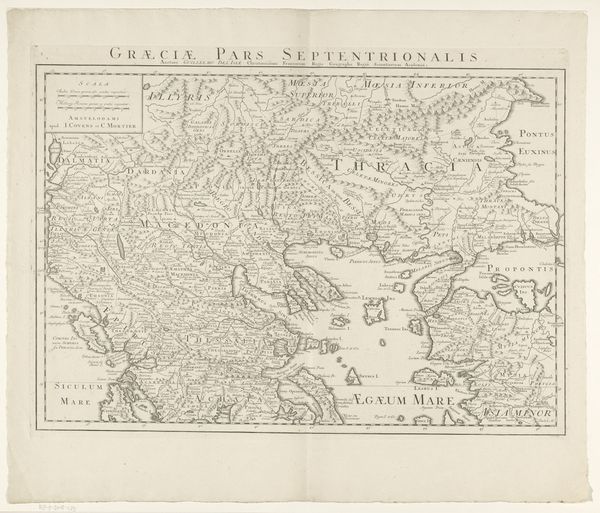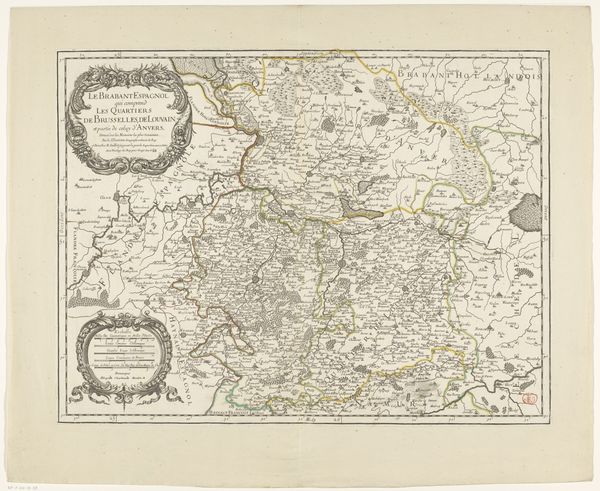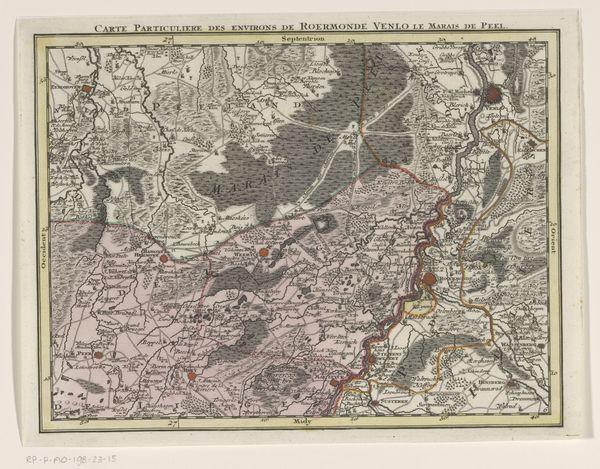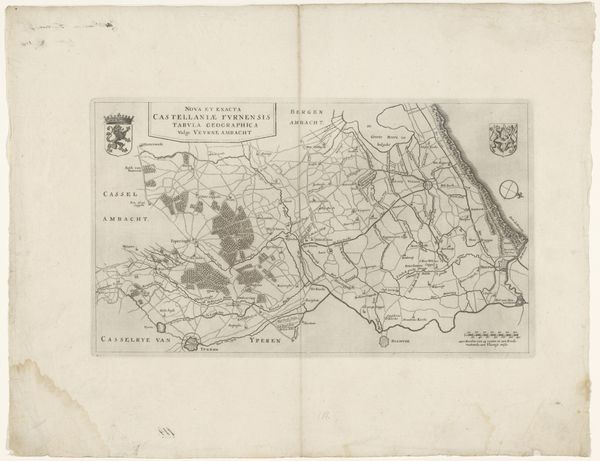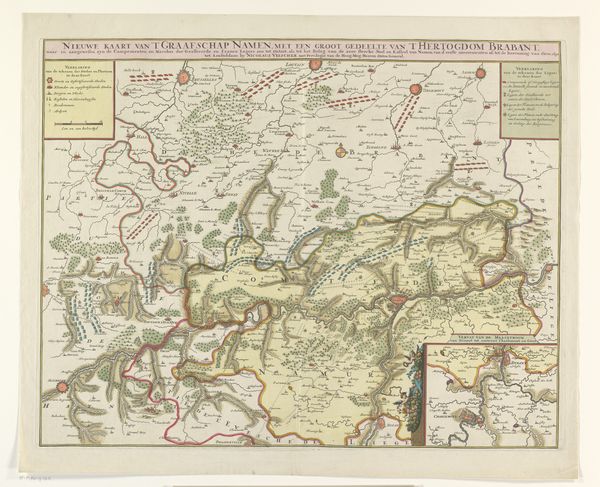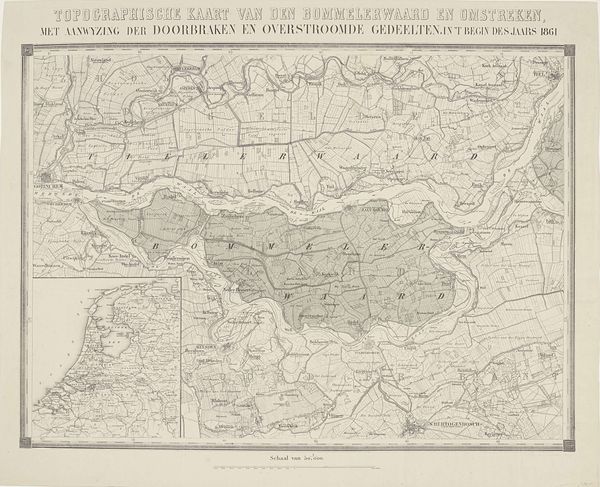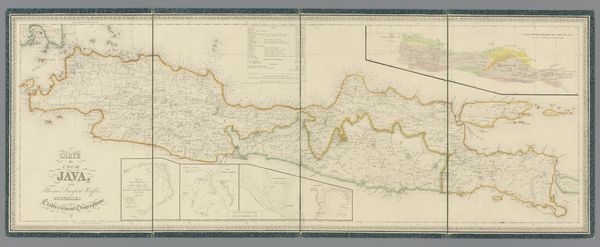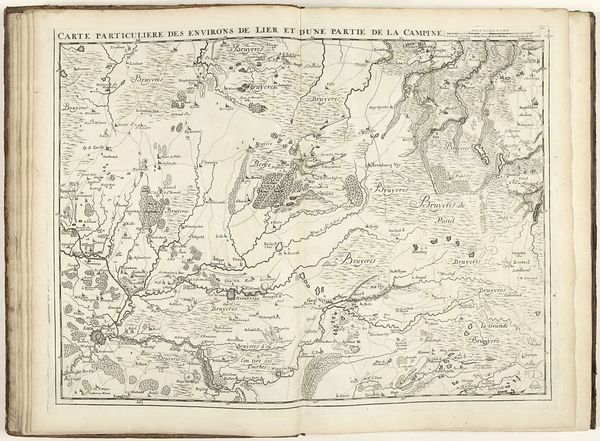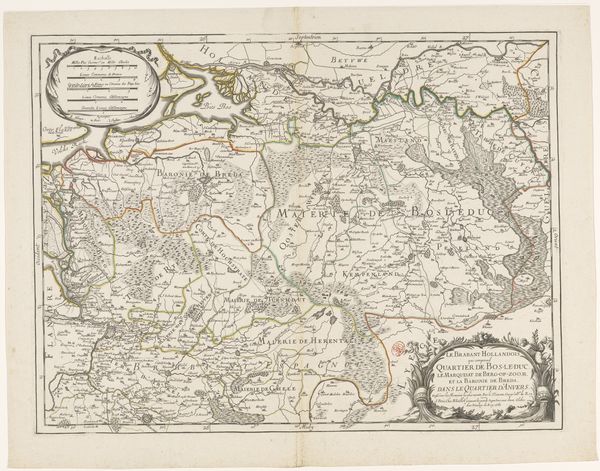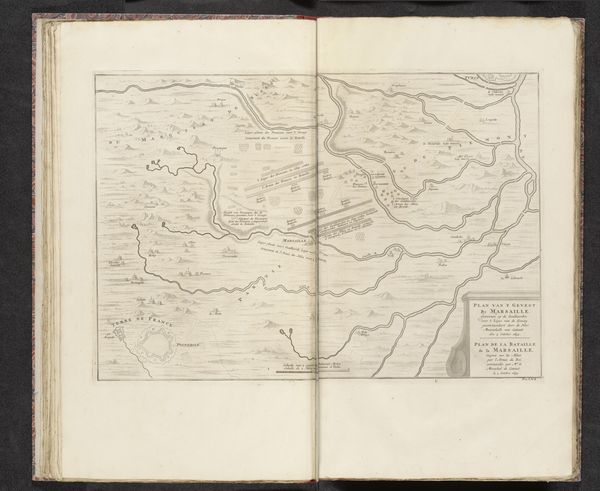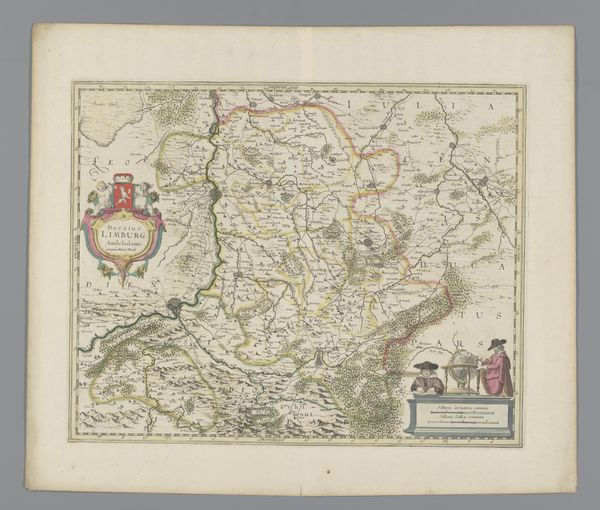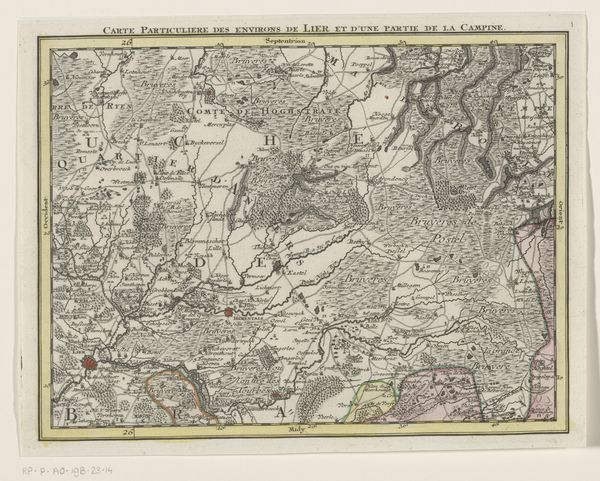
print, etching, photography
# print
#
etching
#
landscape
#
photography
Dimensions: height 193 mm, width 274 mm
Copyright: Rijks Museum: Open Domain
Art Historian: Editor: Here we have what's labeled "Fotoreproductie van een kaart van het Oostenrijks berglandschap" or a photolithographic map of the Austrian mountain landscape. It’s dated before 1877. I find it incredibly detailed, almost like a 3D rendering before computers! What jumps out at you when you first look at it? Editor: It’s certainly intricate. But how accurate were these kinds of representations at the time? Was this more art or science, do you think? Art Historian: Ah, that’s the burning question, isn't it? It teeters charmingly between both worlds. Maps like this were, of course, functional. But the hand of the artist is undeniably present. Look at how light and shadow are rendered! See, they weren't just recording reality; they were *interpreting* it. A pinch of drama here, a dollop of the sublime there... Don't you think that heightens the viewing experience? Editor: It does feel more engaging than just flat data. Did the need for artistic interpretation perhaps arise from limitations in photographic technology? Art Historian: Precisely! Early photography had its quirks. It wasn't always easy to capture detail consistently, especially across vast landscapes. Etching helps clarify forms, bringing those mountains to life with sharp lines and expressive shading. So, where technology fell short, artistry stepped in. Is the result beautiful *because* of, or *in spite* of, those limitations? Editor: I hadn't considered that connection. Maybe it's a beautiful compromise? Were these kinds of maps common, or were they luxury items? Art Historian: Great question! These photo-etched maps were more readily available, but definitely pricier than your average map. These mountain maps allowed people to explore far-off places from the comfort of their armchairs! But also, let's remember that the art of photolithography allowed more artistic control and customization. You could create detailed and stunning visual art pieces to a mass market audience. Any other insights from the image? Editor: Well, it’s interesting to consider how they walked that fine line between documentation and…creative expression! Art Historian: Absolutely. Next time you look at any map, maybe you'll wonder about the person *behind* it!
Comments
No comments
Be the first to comment and join the conversation on the ultimate creative platform.
